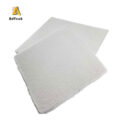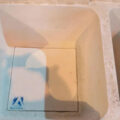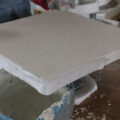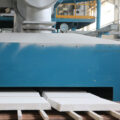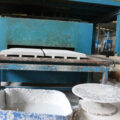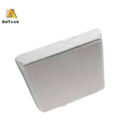The filling rate of the 30 PPI filter is almost as fast as that of the 20 PPI filter. The explanation may be that the effective static pressure is different due to the different melt level in the pouring pool. For 10, 20 and 30 PPI mesh ceramic foam filters, the effect of filter roughness on filling behavior was studied.
By changing the roughness of the filter, the pressure drop on the filter can be changed, thus affecting the final flow rate. By increasing the roughness of the filter, the flow rate can be increased.
When the filter size and effective filter area are equal to the cross section area of the flow channel, the flow rate difference of the mesh foam filter is very small.
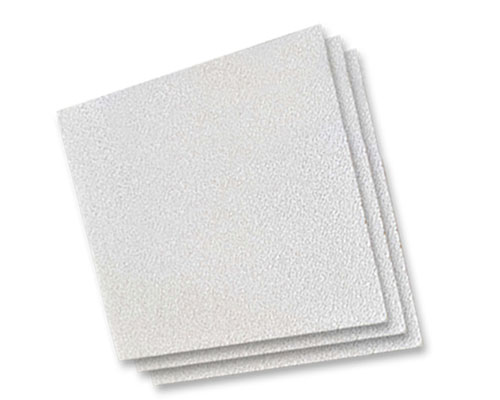
Another way to affect the flow reduction for a particular filter is to change the active filter area. This is usually achieved by increasing the cross-sectional area of the flow passage before and after the filter. In this work, two different active filter regions have been studied. First, the active filter area is equal to the cross-sectional area of the runner. Secondly, by increasing the channel depth before and after the filter to 20 mm, it is increased by 2 times. In the case of doubling the active filtration area, the glass wall used is not fused SiO2 glass. Instead, it is a hardened sodium glass covered with a plastic film.
This is the cause of a large number of bubbles and glass rupture during filling. The effect on mold filling has not been considered, but wall friction may be slightly reduced due to the presence of gas between the melt and the glass wall. Heat transfer may also be reduced.
The optimal filter position has been shown to be directly in the flow path after lowering.
By increasing the roughness of the filter from 30 PPI filter to 20 PPI and finally to 10 PPI, the decrease of flow rate gradually decreases. When the effective filter area is equal to the cross-sectional area of the runner, the effect is very small.
By tripling the active filter area, the flow reduction will be greatly reduced.
The flow rate decreases with the increase of filter length.
It has been shown that the filling degree of the casting basin is very important for the stability of the casting. The melt level in the pouring basin is the decisive factor for down pouring. The level of melt poured into the basin may be more important than the filter length and filter roughness in the inlet system.


